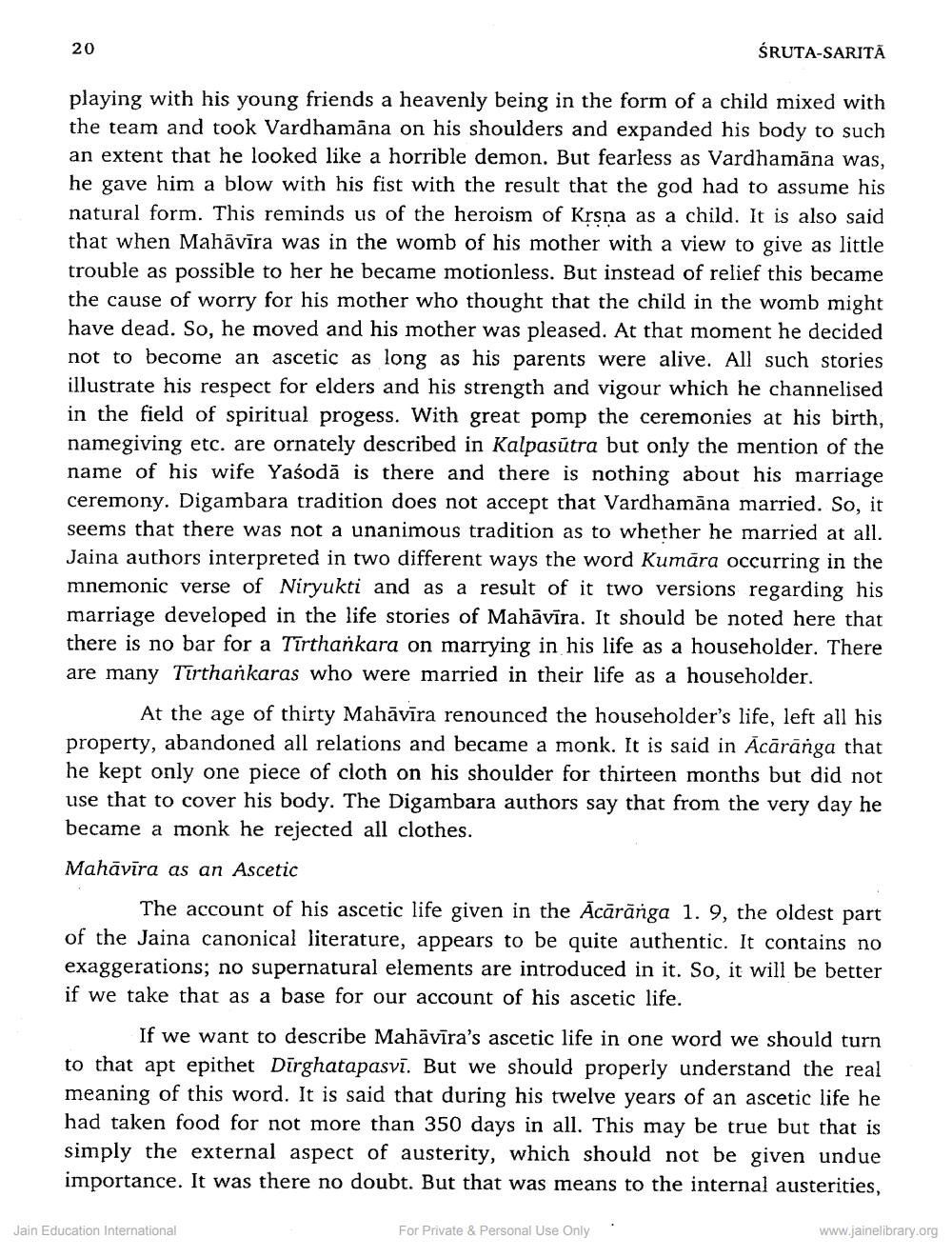________________
20
playing with his young friends a heavenly being in the form of a child mixed with the team and took Vardhamana on his shoulders and expanded his body to such an extent that he looked like a horrible demon. But fearless as Vardhamana was, he gave him a blow with his fist with the result that the god had to assume his natural form. This reminds us of the heroism of Kṛṣṇa as a child. It is also said that when Mahāvīra was in the womb of his mother with a view to give as little trouble as possible to her he became motionless. But instead of relief this became the cause of worry for his mother who thought that the child in the womb might have dead. So, he moved and his mother was pleased. At that moment he decided not to become an ascetic as long as his parents were alive. All such stories. illustrate his respect for elders and his strength and vigour which he channelised in the field of spiritual progess. With great pomp the ceremonies at his birth, namegiving etc. are ornately described in Kalpasūtra but only the mention of the name of his wife Yasoda is there and there is nothing about his marriage. ceremony. Digambara tradition does not accept that Vardhamana married. So, it seems that there was not a unanimous tradition as to whether he married at all. Jaina authors interpreted in two different ways the word Kumāra occurring in the mnemonic verse of Niryukti and as a result of it two versions regarding his marriage developed in the life stories of Mahāvīra. It should be noted here that there is no bar for a Tirthankara on marrying in his life as a householder. There are many Tirthankaras who were married in their life as a householder.
ŚRUTA-SARITA
At the age of thirty Mahävira renounced the householder's life, left all his property, abandoned all relations and became a monk. It is said in Acārānga that he kept only one piece of cloth on his shoulder for thirteen months but did not use that to cover his body. The Digambara authors say that from the very day he became a monk he rejected all clothes.
Mahāvīra as an Ascetic
The account of his ascetic life given in the Acäränga 1. 9, the oldest part of the Jaina canonical literature, appears to be quite authentic. It contains no exaggerations; no supernatural elements are introduced in it. So, it will be better if we take that as a base for our account of his ascetic life.
If we want to describe Mahāvīra's ascetic life in one word we should turn to that apt epithet Dirghatapasvī. But we should properly understand the real meaning of this word. It is said that during his twelve years of an ascetic life he had taken food for not more than 350 days in all. This may be true but that is simply the external aspect of austerity, which should not be given undue. importance. It was there no doubt. But that was means to the internal austerities,
Jain Education International
For Private & Personal Use Only
www.jainelibrary.org




